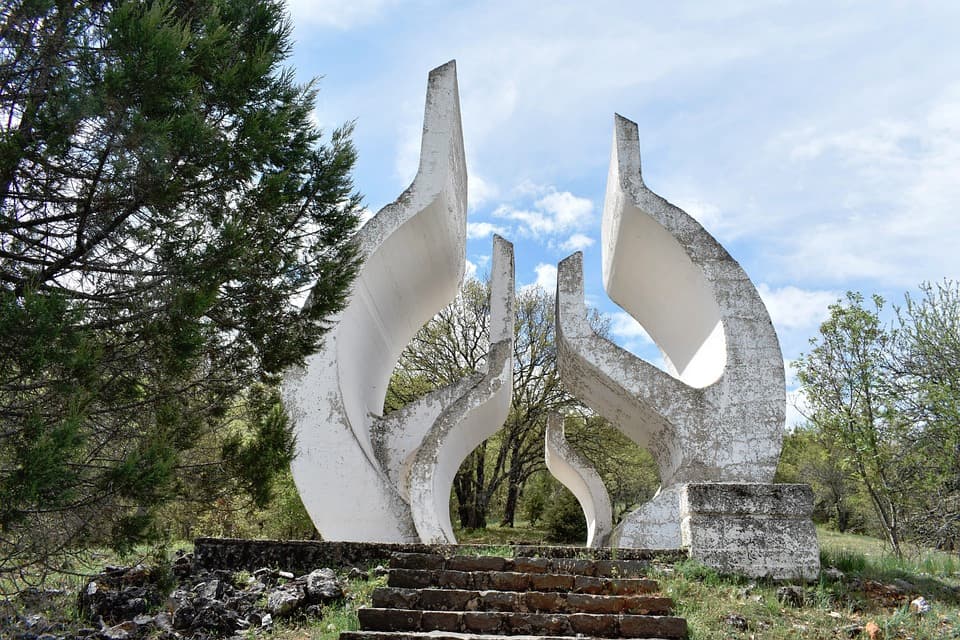Yugoslavia, the historical country in Southeast Europe, was a cultural melting pot that created a unique blend of traditions, languages, and cuisines. The country dissolved in the early 1990s, but its shopping legacy still resonates today. In this blog post, we will take a nostalgic journey through shopping in Yugoslavia, discovering the best spots, souvenirs, and memories of the past.
A Trip Down Memory Lane: Famous Shopping Destinations in Yugoslavia
1. Skadarlija, Belgrade
Skadarlija was the bohemian heart of Belgrade, Yugoslavia’s capital. With its narrow, cobblestone streets and vibrant atmosphere, the area was home to numerous artists, musicians, and poets. Today, you can still visit Skadarlija and stroll along its picturesque streets, finding inspiration in its past.
2. Bascarsija, Sarajevo
Bascarsija was the bustling center of commerce in Sarajevo. This historical marketplace housed a variety of artisanal shops and workshops, where craftsmen created and sold their unique wares. The rich cultural heritage of Bascarsija lives on, as the area remains a must-visit destination for shopping enthusiasts.
Classic Yugoslav Souvenirs to Take Home
- Handmade Pottery
Yugoslavia was known for its beautiful, handcrafted pottery. Traditional pottery items, such as ćup (a traditional jug) and džezva (a Turkish coffee pot), make for perfect souvenirs to remember your trip.
- Filigree Jewelry
Filigree jewelry, characterized by intricate metalwork, was a popular Yugoslav craft. Today, you can still find stunning pieces of filigree jewelry in various markets and boutiques.
- Licitar Hearts
Licitar hearts are a traditional Croatian gingerbread-like pastry, often used as decoration or given as a token of love. These colorful, edible works of art are a delightful souvenir to remember your Yugoslav shopping experience.
Shopping in Yugoslavia Today: A Blend of Old and New
While the country of Yugoslavia no longer exists, its successor states – such as Croatia, Serbia, Bosnia and Herzegovina, Montenegro, North Macedonia, and Slovenia – continue to preserve its shopping traditions. Moreover, modern shopping centers and online platforms like Shoppok offer a wide variety of products, from Yugoslav-era items to contemporary goods.
In Conclusion: Yugoslavia’s Rich Shopping Legacy
The shopping scene in Yugoslavia offered a unique blend of cultural influences and artisanal crafts. As we reminisce about the nostalgic shopping experiences in this once-unified nation, we can’t help but appreciate the rich history and tradition that shaped the region. Today, shopping enthusiasts can still experience a piece of Yugoslav history by exploring its successor states or discovering treasures on websites like Shoppok.
The Influence of Yugoslav Design on Modern Fashion
Yugoslavia’s impact on the world of design has not gone unnoticed. The country’s unique aesthetics and diverse cultural influences have left a lasting impression on modern fashion. Here are a few examples of Yugoslav-inspired fashion trends:
- Kroj: Traditional Folk Costumes
Kroj is a term used to describe traditional folk costumes worn throughout the Yugoslav region. These outfits, featuring rich embroidery, colorful patterns, and intricate detailing, have inspired contemporary fashion designers to create unique, modern interpretations of these classic garments.
- Yugonostalgia: A Fashion Movement
Yugonostalgia is a phenomenon that has emerged in recent years, as people from former Yugoslav countries look back on their shared history with a sense of nostalgia. This sentiment has led to a resurgence in Yugoslav-inspired fashion, with designers creating clothing and accessories that pay homage to the country’s unique cultural and historical identity.
Culinary Treasures: The Flavors of Yugoslavia
Yugoslavia’s diverse culinary traditions are another aspect of the country’s rich cultural heritage that visitors can still experience today. Here are some of the most popular dishes that originated in Yugoslavia or have been influenced by its regional cuisines:
- Ćevapi
Ćevapi are small, grilled sausages made from a mix of minced meats, often served with chopped onions and a side of kajmak (a type of clotted cream). These savory delights are popular throughout the Balkan region and are a must-try for any foodie visiting the area.
- Burek
Burek is a flaky, layered pastry filled with a variety of ingredients, such as cheese, spinach, or minced meat. This delicious treat is a staple in many former Yugoslav countries and is perfect for breakfast or a quick snack.
- Sarma
Sarma is a dish made from cabbage or vine leaves stuffed with a mixture of rice, minced meat, and spices. This hearty meal is enjoyed in many countries throughout the region and is often served with a side of mashed potatoes or polenta.
The Legacy of Yugoslav Art and Architecture
The art and architecture of Yugoslavia reflect the country’s diverse cultural influences, and exploring these creative masterpieces is another way to experience the country’s rich history. Some examples of Yugoslav art and architecture worth exploring include:
- Brutalist Architecture
Yugoslavia was known for its Brutalist architecture, characterized by massive, geometric concrete structures. These imposing buildings can still be seen in many cities across the region and serve as a testament to the country’s architectural legacy.
- Naïve Art
Naïve art, a genre characterized by its childlike simplicity and lack of formal artistic training, was widely popular in Yugoslavia. The works of Yugoslav naïve artists, such as Ivan Generalić and Martin Mehkek, are celebrated for their vibrant colors and whimsical scenes of rural life.
In conclusion, the shopping scene in Yugoslavia was just one aspect of the country’s vibrant and diverse cultural landscape. From fashion and culinary traditions to art and architecture, there is so much to discover and appreciate about the legacy of Yugoslavia.
